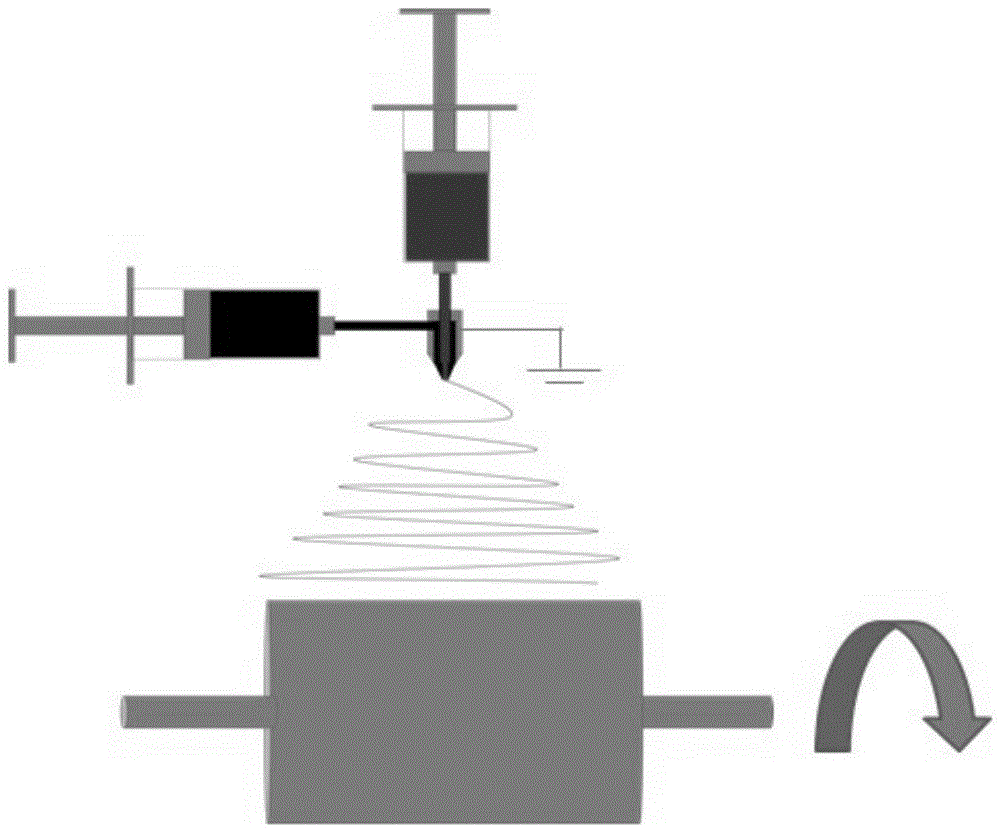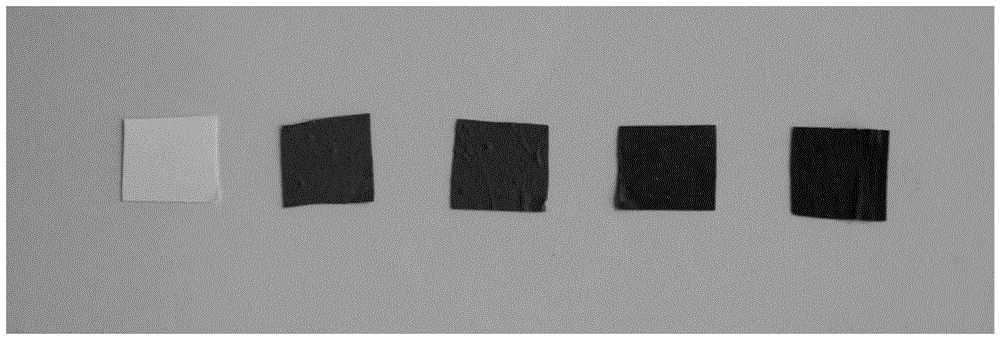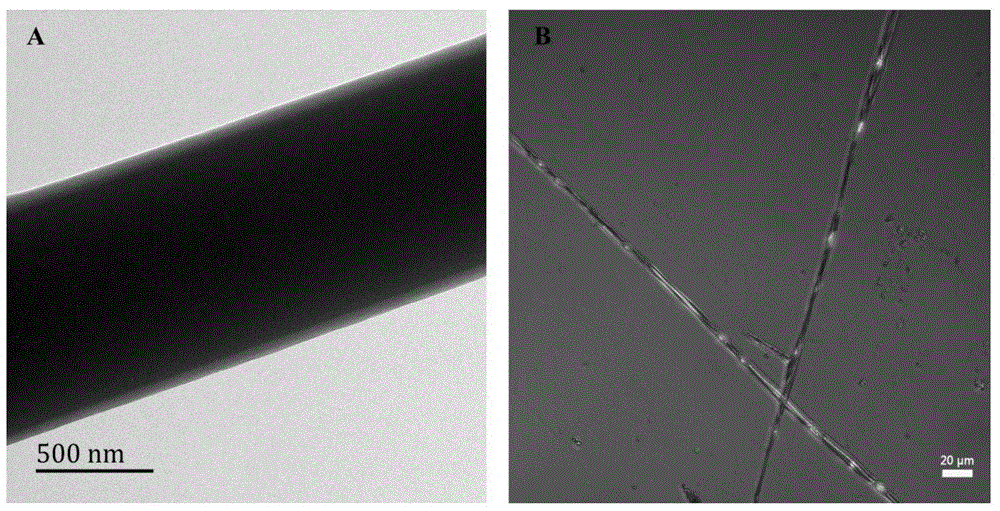Preparation method of conductive slow-release nerve tissue engineering scaffold
A nerve tissue, slow-release technology, which is applied in the preparation of conductive slow-release nerve tissue engineering scaffolds and the field of nerve defect repair, achieves the effects of good biocompatibility, few control parameters, and simple preparation device
- Summary
- Abstract
- Description
- Claims
- Application Information
AI Technical Summary
Problems solved by technology
Method used
Image
Examples
Embodiment 1
[0035] Weigh 0.1g of protein silk fibroin, 0.3g of lactic acid-caprolactone copolymer, dissolve in 5ml of hexafluoroisopropanol (HFIP), the molecular weight of lactic acid-caprolactone copolymer is Mw≈300,000, at 200r / min. Stir at a high speed for 5 hours and mix evenly to obtain a solution with a total concentration of 8% (w / v); after mixing evenly, add 60mg of polyaniline (Mn≈15,000) and camphorsulfonic acid, and then magnetically stir at a rate of 300r / min. After 48 hours, the cortex electrospinning solution was prepared by mixing evenly, and 1 ml of 10 μg / ml nerve growth factor (NGF) ultrapure aqueous solution was taken as the core electrospinning solution. The electrospinning solution of the shell layer was loaded into a syringe, and the advancing speed of the micro-injection pump was controlled to be 1ml / h. The electrospinning solution of the core layer was loaded into another syringe, and the advancing speed of the micro-injection pump was controlled to be 0.2ml / h. The ...
Embodiment 2
[0037]Weigh 0.125g of protein silk fibroin, 0.375g of lactic acid-caprolactone copolymer, dissolve in 5ml hexafluoroisopropanol (HFIP), the molecular weight of lactic acid-caprolactone copolymer is Mw≈300,000, at 200r / min. Stir at a high speed for 5 hours and mix evenly to obtain a solution with a total concentration of 10% (w / v); after mixing evenly, add 80 mg of polyaniline (Mn≈15,000) and camphorsulfonic acid, and then magnetically stir at a rate of 300r / min. After 48 hours, the cortex electrospinning solution was prepared by mixing evenly, and 1 ml of 10 μg / ml nerve growth factor (NGF) ultrapure aqueous solution was taken as the core electrospinning solution. The electrospinning solution of the shell layer was loaded into a syringe, and the advancing speed of the micro-injection pump was controlled to be 1ml / h. The electrospinning solution of the core layer was loaded into another syringe, and the advancing speed of the micro-injection pump was controlled to be 0.2ml / h. Th...
PUM
 Login to View More
Login to View More Abstract
Description
Claims
Application Information
 Login to View More
Login to View More - R&D
- Intellectual Property
- Life Sciences
- Materials
- Tech Scout
- Unparalleled Data Quality
- Higher Quality Content
- 60% Fewer Hallucinations
Browse by: Latest US Patents, China's latest patents, Technical Efficacy Thesaurus, Application Domain, Technology Topic, Popular Technical Reports.
© 2025 PatSnap. All rights reserved.Legal|Privacy policy|Modern Slavery Act Transparency Statement|Sitemap|About US| Contact US: help@patsnap.com



